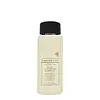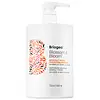What's inside
What's inside
 Key Ingredients
Key Ingredients

 Benefits
Benefits

 Concerns
Concerns

 Ingredients Side-by-side
Ingredients Side-by-side

Water
Skin ConditioningLauramidopropyl Betaine
CleansingCocamidopropyl Hydroxysultaine
CleansingSodium Cocoyl Isethionate
CleansingGlycerin
HumectantSodium Lauryl Sulfoacetate
CleansingDisodium Laureth Sulfosuccinate
CleansingAloe Barbadensis Leaf Juice
Skin ConditioningTocopheryl Acetate
AntioxidantCocos Nucifera Oil
MaskingPhenoxyethanol
PreservativeSodium Lauroyl Sarcosinate
CleansingSodium C14-16 Olefin Sulfonate
CleansingSoyamidopropylamine Oxide
CleansingPolyquaternium-71
HumectantMaltodextrin
AbsorbentSodium Cocoyl Glutamate
CleansingPanthenol
Skin ConditioningPolyquaternium-7
Sodium Hydroxide
BufferingCitric Acid
BufferingWater, Lauramidopropyl Betaine, Cocamidopropyl Hydroxysultaine, Sodium Cocoyl Isethionate, Glycerin, Sodium Lauryl Sulfoacetate, Disodium Laureth Sulfosuccinate, Aloe Barbadensis Leaf Juice, Tocopheryl Acetate, Cocos Nucifera Oil, Phenoxyethanol, Sodium Lauroyl Sarcosinate, Sodium C14-16 Olefin Sulfonate, Soyamidopropylamine Oxide, Polyquaternium-71, Maltodextrin, Sodium Cocoyl Glutamate, Panthenol, Polyquaternium-7, Sodium Hydroxide, Citric Acid
Water
Skin ConditioningSodium Cocoyl Isethionate
CleansingCocamidopropyl Hydroxysultaine
CleansingLauramidopropyl Betaine
CleansingGlycerin
HumectantDisodium Laureth Sulfosuccinate
CleansingPolysorbate 80
EmulsifyingSodium Lauryl Sulfoacetate
CleansingSoyamidopropylamine Oxide
CleansingMaltodextrin
AbsorbentBiotin
AntiseborrhoeicPanthenol
Skin ConditioningPanax Ginseng Root Extract
EmollientZingiber Officinale Extract
Skin ConditioningZingiber Officinale Root Oil
MaskingTocopheryl Acetate
AntioxidantAloe Barbadensis Leaf Juice
Skin ConditioningArgania Spinosa Kernel Oil
EmollientCitrus Aurantium Dulcis Peel Oil
MaskingCitrus Grandis Peel Oil
MaskingCitrus Tangerina Peel Oil
MaskingCocos Nucifera Oil
MaskingLavandula Angustifolia Oil
MaskingMentha Viridis Leaf Oil
AstringentSantalum Album Oil
MaskingSodium C14-18 Olefin Sulfonate
CleansingSodium Cocoyl Glutamate
CleansingSodium Lauroyl Sarcosinate
CleansingPolyquaternium-7
Polyquaternium-71
HumectantParfum
MaskingCitric Acid
BufferingBenzyl Alcohol
PerfumingDehydroacetic Acid
PreservativeCoconut Acid
CleansingVegetable Oil
Skin ConditioningPlant Ash
Water, Sodium Cocoyl Isethionate, Cocamidopropyl Hydroxysultaine, Lauramidopropyl Betaine, Glycerin, Disodium Laureth Sulfosuccinate, Polysorbate 80, Sodium Lauryl Sulfoacetate, Soyamidopropylamine Oxide, Maltodextrin, Biotin, Panthenol, Panax Ginseng Root Extract, Zingiber Officinale Extract, Zingiber Officinale Root Oil, Tocopheryl Acetate, Aloe Barbadensis Leaf Juice, Argania Spinosa Kernel Oil, Citrus Aurantium Dulcis Peel Oil, Citrus Grandis Peel Oil, Citrus Tangerina Peel Oil, Cocos Nucifera Oil, Lavandula Angustifolia Oil, Mentha Viridis Leaf Oil, Santalum Album Oil, Sodium C14-18 Olefin Sulfonate, Sodium Cocoyl Glutamate, Sodium Lauroyl Sarcosinate, Polyquaternium-7, Polyquaternium-71, Parfum, Citric Acid, Benzyl Alcohol, Dehydroacetic Acid, Coconut Acid, Vegetable Oil, Plant Ash
 Reviews
Reviews

Ingredients Explained
These ingredients are found in both products.
Ingredients higher up in an ingredient list are typically present in a larger amount.
Aloe Barbadensis Leaf Juice comes from leaves of the aloe plant. Aloe Barbadensis Leaf Juice is best known for helping to soothe sunburns. It is also anti-inflammatory, moisturizing, antiseptic, and can help heal wounds.
Aloe is packed with good stuff including Vitamins A, C, and E. These vitamins are antioxidants, which help fight free-radicals and the damage they may cause. Free-radicals are molecules that may damage your skin cells, such as pollution.
Aloe Barbadensis Leaf Juice also contains sugars. These sugars come in the form of monosaccharides and polysaccharides, folic acid, and choline. These sugars are able to help bind moisture to skin.
It also contains minerals such as calcium, 12 anthraquinones, fatty acids, amino acids, and Vitamin B12.
Learn more about Aloe Barbadensis Leaf JuiceCitric Acid is an alpha hydroxy acid (AHA) naturally found in citrus fruits like oranges, lemons, and limes.
Like other AHAs, citric acid can exfoliate skin by breaking down the bonds that hold dead skin cells together. This helps reveal smoother and brighter skin underneath.
However, this exfoliating effect only happens at high concentrations (20%) which can be hard to find in cosmetic products.
Due to this, citric acid is usually included in small amounts as a pH adjuster. This helps keep products slightly more acidic and compatible with skin's natural pH.
In skincare formulas, citric acid can:
While it can provide some skin benefits, research shows lactic acid and glycolic acid are generally more effective and less irritating exfoliants.
Most citric acid used in skincare today is made by fermenting sugars (usually from molasses). This synthetic version is identical to the natural citrus form but easier to stabilize and use in formulations.
Read more about some other popular AHA's here:
Learn more about Citric AcidCocamidopropyl Hydroxysultaine is a synthetic cleansing agent, though it is derived from coconut oil.
It is used to enhance the texture of products by boosting lather and thickening the texture. As a cleanser, Cocamidopropyl Hydroxysultaine is mild.
Cocos Nucifera Oil is obtained from the kernels of the coconut fruit. In other words, this is coconut oil.
Coconut Oil is rich in fatty acids with lauric acid making up the majority of these. It also contains linoleic acid. Due to this high fatty acid content, coconut oil helps trap moisture and soften skin.
Despite being antibacterial, coconut oil may not be great for acne-prone skin. It is comedogenic and may clog pores. This ingredient may not be safe for malassezia or fungal acne.
Note: Coconut Oil should not replace your sunscreen for UV protection. Studies show it only blocks about 20% of UV.
This oil is non-volatile and has a light scent.
The term 'fragrance' is not regulated in many countries. In many cases, it is up to the brand to define this term. For instance, many brands choose to label themselves as "fragrance-free" because they are not using synthetic fragrances. However, their products may still contain ingredients such as essential oils that are considered a fragrance.
Learn more about Cocos Nucifera OilThis ingredient is a cleansing agent, surfactant, and foam booster. It considered an alternative to traditional sulfates (Sulfosuccinate) and is allowed in "sulfate-free" products.
According to a manufacturer, this ingredient is mild and can be used in baby and bath options.
Glycerin is already naturally found in your skin. It helps moisturize and protect your skin.
A study from 2016 found glycerin to be more effective as a humectant than AHAs and hyaluronic acid.
As a humectant, it helps the skin stay hydrated by pulling moisture to your skin. The low molecular weight of glycerin allows it to pull moisture into the deeper layers of your skin.
Hydrated skin improves your skin barrier; Your skin barrier helps protect against irritants and bacteria.
Glycerin has also been found to have antimicrobial and antiviral properties. Due to these properties, glycerin is often used in wound and burn treatments.
In cosmetics, glycerin is usually derived from plants such as soybean or palm. However, it can also be sourced from animals, such as tallow or animal fat.
This ingredient is organic, colorless, odorless, and non-toxic.
Glycerin is the name for this ingredient in American English. British English uses Glycerol/Glycerine.
Learn more about GlycerinWe don't have a description for Lauramidopropyl Betaine yet.
Maltodextrin is a polysaccharide. It is derived from starch such as rice, corn, wheat, or potato starch.
In food, Maltodextrin is used to improve the texture and thicken a product. Due to its structure, it can help create a gel texture. As an emulsion stabilizer, it helps keep the ingredients in a product together.
As a polysaccharide, Maltodextrin has moisturizing properties. Polysaccharides are a type of carbohydrate. The top layer of skin uses polysaccharides to retain water, keeping the skin hydrated.
Maltodextrin is water soluble and has a sweet taste.
Learn more about MaltodextrinPanthenol is a common ingredient that helps hydrate and soothe the skin. It is found naturally in our skin and hair.
There are two forms of panthenol: D and L.
D-panthenol is also known as dexpanthenol. Most cosmetics use dexpanthenol or a mixture of D and L-panthenol.
Panthenol is famous due to its ability to go deeper into the skin's layers. Using this ingredient has numerous pros (and no cons):
Like hyaluronic acid, panthenol is a humectant. Humectants are able to bind and hold large amounts of water to keep skin hydrated.
This ingredient works well for wound healing. It works by increasing tissue in the wound and helps close open wounds.
Once oxidized, panthenol converts to pantothenic acid. Panthothenic acid is found in all living cells.
This ingredient is also referred to as pro-vitamin B5.
Learn more about PanthenolPolyquaternium-7 is a light to clear colored liquid. It is commonly found in haircare products for its film-forming and anti-static properties.
According to a manufacturer, it is a non-paraben and specially developed for negatively charged surfactant systems. This makes it a great hairstyle holder and helps to improve wet hair detangling without adding buildup.
We don't have a description for Polyquaternium-71 yet.
Sodium Cocoyl Glutamate is a gentle cleanser and surfactant. It is the sodium salt of the Cocoyl Glutamic Acid and comes from coconut oil. As a surfactant, it helps lift dirt and oil to be washed away.
Sodium Cocoyl Glutamate also has an emolliating effect and can help leave the skin feeling soft.
Sodium cocoyl isethionate is a natural ingredient from coconut oil. It is an ultra gentle cleanser that gives a nice foam without drying the skin or impacting the skin barrier.
The amount of foam created depends on the amount of sodium cocoyl isethionate used in the product.
This ingredient also helps improve the spreadability of a product.
Learn more about Sodium Cocoyl IsethionateSodium Lauroyl Sarcosinate is a cleansing agent and emulsifier. It is a surfactant derived from sarcosine, and a common source is coconut oil.
As a surfactant, Sodium Lauroyl Sarcosinate helps lift dirts, oil, and other molecules to be washed away. In leave-on products, this ingredient is used as an emulsifier. Emulsifier help prevent ingredients such as oils and waters from separating.
Sodium Lauroyl Sarcosinate is also commonly found as a foaming agent in shampoo, toothpaste, and shaving foam. It is amphiphilic, meaning it loves both water and fats.
Learn more about Sodium Lauroyl SarcosinateSodium Lauryl Sulfoacetate is an organic salt with a naturally sweet odor. It is an alternative to traditional sulfates and is commonly found in "sulfate-free" products.
In cosmetics, this ingredient is used to increase the volume of foam, emulsify ingredients, and as a cleansing agent.
As a cleansing agent, sodium lauryl sulfoacetate helps reduce the surface tension of dirt, oil, and other pollutants so they can be rinsed away easily.
Cosmetic Ingredient Review found this ingredient to irritate the eyes and skin in concentrations of 0.18% and 0.7%.
Learn more about Sodium Lauryl SulfoacetateWe don't have a description for Soyamidopropylamine Oxide yet.
Tocopheryl Acetate is AKA Vitamin E. It is an antioxidant and protects your skin from free radicals. Free radicals damage the skin by breaking down collagen.
One study found using Tocopheryl Acetate with Vitamin C decreased the number of sunburned cells.
Tocopheryl Acetate is commonly found in both skincare and dietary supplements.
Learn more about Tocopheryl AcetateWater. It's the most common cosmetic ingredient of all. You'll usually see it at the top of ingredient lists, meaning that it makes up the largest part of the product.
So why is it so popular? Water most often acts as a solvent - this means that it helps dissolve other ingredients into the formulation.
You'll also recognize water as that liquid we all need to stay alive. If you see this, drink a glass of water. Stay hydrated!
Learn more about Water